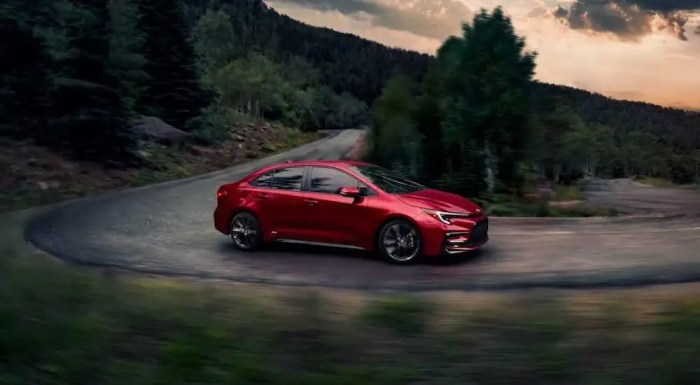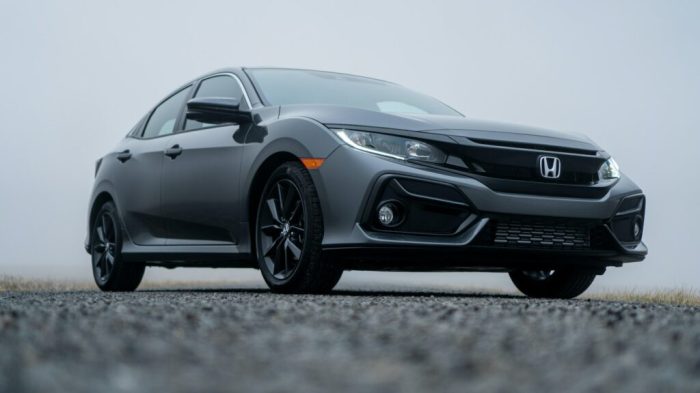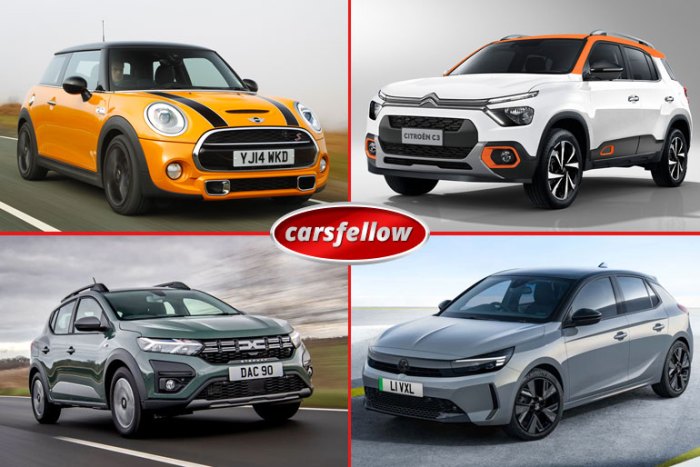Best cars for college students under $10k 2025? Finding a reliable ride without breaking the bank is totally doable, even on a student budget. This guide dives into the best used cars for college life in 2025, focusing on affordability, safety, fuel efficiency, and practicality. We’ll cover everything from maintenance costs to insurance estimates, helping you make the smartest choice for your needs.
We’ll look at specific models, compare safety ratings, and even figure out how much you’ll spend on gas and insurance. Think of it as your ultimate pre-owned car shopping cheat sheet – because let’s face it, nobody wants to be stranded on the side of the road with a textbook in their lap.
Affordable and Reliable Options
Finding a reliable car for under $10,000 in 2025 might seem daunting, but with a little research, you can snag a decent ride that won’t break the bank. This price range typically means you’ll be looking at used vehicles, so focusing on reliability and fuel efficiency is key to keeping your college budget intact. Remember, the condition of the specific car matters more than the model, so thorough inspections are essential.
Choosing a reliable car is crucial for a college student. Unexpected repairs can severely impact your budget, especially when juggling tuition, textbooks, and social life. Fuel efficiency is equally important, as you’ll likely be driving around campus, to part-time jobs, and maybe even visiting family. Lower gas costs translate directly to more money in your pocket.
Reliable Car Models Under $10,000 (2025 Estimates)
The following table lists some models commonly found in the under-$10,000 market, known for their reliability and fuel efficiency. Keep in mind that year and condition heavily influence the final price and MPG. These figures are estimates based on average market values and fuel economy ratings. Always check the specific vehicle’s history report for accurate data.
| Make | Model | Year Range | Average MPG |
|---|---|---|---|
| Honda | Civic | 2010-2015 | 28-35 |
| Toyota | Corolla | 2010-2015 | 28-34 |
| Mazda | Mazda3 | 2010-2014 | 26-33 |
| Ford | Focus | 2010-2015 | 26-34 |
| Hyundai | Elantra | 2011-2016 | 28-35 |
Maintenance Costs Comparison
Maintenance costs vary widely depending on the car’s age, condition, and driving habits. However, generally speaking, Hondas and Toyotas are often praised for their lower maintenance costs compared to other brands. Parts are readily available, and repairs tend to be less expensive. Mazda and Hyundai also have a solid reputation for reliability and reasonable repair costs.
Ford can be a bit more variable; some models are cheaper to maintain than others. Regular maintenance, such as oil changes and tire rotations, is crucial regardless of the make and model to prevent costly repairs down the line. Budget approximately $50-$100 per month for routine maintenance and a contingency fund for unexpected repairs.
Used vs. Certified Pre-Owned (CPO), Best cars for college students under k 2025
In the under-$10,000 range, the choice between a used car and a CPO car comes down to budget and risk tolerance. CPO cars typically offer a more comprehensive warranty and have undergone a more rigorous inspection process. However, this comes at a higher price. Used cars offer greater affordability but may require more upfront investment in repairs. A pre-purchase inspection from a trusted mechanic is highly recommended for both used and CPO vehicles to identify potential problems before you buy.
Safety Features and Considerations

Finding a safe car on a budget is totally crucial, especially when you’re a college student navigating new roads and maybe even less-than-ideal weather conditions. Your safety shouldn’t be compromised just because you’re working with a limited budget. Let’s dive into some key safety aspects to keep in mind when car shopping.
For young drivers, prioritizing safety features can significantly reduce the risk of accidents and injuries. Even seemingly minor accidents can lead to significant expenses, not to mention the potential for serious harm. Making smart choices now can save you a lot of trouble down the road (pun intended!).
Essential Safety Features for Young Drivers
Three safety features stand out as particularly important for young, inexperienced drivers: Electronic Stability Control (ESC), Anti-lock Braking System (ABS), and airbags. These features work together to help you maintain control of your vehicle in challenging situations and mitigate the impact of a collision.
- Electronic Stability Control (ESC): ESC helps prevent loss of control by automatically applying brakes to individual wheels and reducing engine power when it detects a skid. This is especially helpful in slippery conditions like rain or snow, situations where a young driver might lack experience.
- Anti-lock Braking System (ABS): ABS prevents your wheels from locking up during hard braking, allowing you to maintain steering control and avoid skidding. This is vital for avoiding collisions, particularly in emergency braking situations.
- Airbags: Airbags are designed to cushion the impact in a collision, reducing the risk of serious head and chest injuries. While seatbelts are essential, airbags provide an additional layer of protection.
Safety Ratings Comparison
Comparing safety ratings from organizations like the National Highway Traffic Safety Administration (NHTSA) and the Insurance Institute for Highway Safety (IIHS) is a smart way to objectively assess the safety of different vehicles. These organizations conduct rigorous crash tests and assign ratings based on the performance of vehicles in various scenarios.
| Model | NHTSA Overall Safety Rating (Example) | IIHS Top Safety Pick+ Status (Example) |
|---|---|---|
| Honda Civic (older model within budget) | 5 stars | Top Safety Pick+ (assuming it meets criteria) |
| Toyota Corolla (older model within budget) | 5 stars | Top Safety Pick+ (assuming it meets criteria) |
| Mazda3 (older model within budget) | 5 stars | Top Safety Pick+ (assuming it meets criteria) |
Note: These are example ratings. Always check the most up-to-date safety ratings from NHTSA and IIHS for specific model years and trims before making a purchase. Older models within the $10,000 budget might not achieve the highest ratings but should still offer better safety than many older vehicles.
Basic Car Maintenance Checks for Safety
Regularly checking your car’s vital systems is key to preventing unexpected breakdowns and ensuring your safety. These simple checks can save you from potentially dangerous situations.
- Tire Pressure: Check your tire pressure at least once a month using a tire pressure gauge. Proper inflation ensures better handling and prevents blowouts. Under-inflated tires can significantly reduce fuel efficiency and handling.
- Fluid Levels: Check your engine oil, coolant, brake fluid, and power steering fluid levels regularly. Low fluid levels can lead to engine damage, overheating, brake failure, or steering problems.
- Lights and Signals: Make sure all your lights (headlights, taillights, brake lights, turn signals) are working correctly. Faulty lights can significantly reduce visibility and increase the risk of accidents.
- Wipers and Washers: Ensure your windshield wipers and washer fluid are in good condition. Poor visibility due to dirty windshields can be extremely dangerous, especially in bad weather.
Fuel Efficiency and Running Costs: Best Cars For College Students Under k 2025
So, you’ve found a sweet ride under $10k – congrats! But before you hit the open road, let’s talk about the less glamorous side of car ownership: fuel efficiency and those pesky running costs. Understanding these factors is crucial for keeping your budget in check, especially on a college student’s income. We’ll break down the fuel consumption and estimated annual costs for some popular models, helping you make an informed decision.Gas prices fluctuate like crazy, and driving habits vary wildly (city driving guzzles more gas than highway cruising), so these are estimates.
Think of them as a helpful starting point for your own research. Always check the EPA’s official fuel economy estimates for the most accurate figures for the specific year and trim of the car you’re considering.
Average Fuel Consumption and Associated Costs
Let’s assume we’re looking at three popular choices for budget-friendly college cars: a Honda Civic (2010-2015), a Toyota Corolla (2010-2015), and a Mazda3 (2010-2015). These models are known for their reliability and relatively good fuel economy. Keep in mind that actual fuel economy will vary depending on the specific year, model, and driving conditions. We’ll use EPA estimates as a baseline for our calculations.
For example, a 2012 Honda Civic might average around 28 mpg combined (city and highway driving), while a comparable Corolla might get 30 mpg, and the Mazda3 perhaps 27 mpg. At an average gas price of $3.50 per gallon, the cost per mile would differ slightly between these models. The Civic would cost roughly $0.125 per mile (3.50/28), the Corolla about $0.117 (3.50/30), and the Mazda3 around $0.13 (3.50/27).
Highway driving will generally yield better fuel economy than city driving for all three models.
Estimated Annual Fuel Costs
Now let’s get into some real-world numbers. Let’s assume a college student drives about 12,000 miles per year. Based on our previous calculations, here’s a breakdown of estimated annual fuel costs:
- Honda Civic (28 mpg): 12,000 miles / 28 mpg
– $3.50/gallon = Approximately $1,500 per year - Toyota Corolla (30 mpg): 12,000 miles / 30 mpg
– $3.50/gallon = Approximately $1,400 per year - Mazda3 (27 mpg): 12,000 miles / 27 mpg
– $3.50/gallon = Approximately $1,556 per year
Remember, these are estimates. Your actual costs could be higher or lower depending on your driving habits, gas prices, and the specific condition of the vehicle.
Impact of Different Fuel Types
Most of the cars in this price range will run perfectly fine on regular unleaded gasoline. Using premium fuel in a car that doesn’t require it is a waste of money. The owner’s manual will clearly state the recommended fuel type for your specific vehicle. Sticking to regular unleaded will save you money in the long run.
Finding a reliable car for under $10k in 2025 as a college student can be tough, but focusing on fuel efficiency is key. If you’re thinking long-term and considering an EV, you’ll want to check out the best places to charge, like those listed in this article on Best States For Ev Truck Charging Stations , before committing to an electric vehicle.
Ultimately, your best bet for a cheap college car will depend on your location and charging access.
Premium fuel might offer a slight performance boost in some high-performance engines, but the cost difference rarely justifies the benefit for a used car in this price range.
Finding a reliable car for under $10k in 2025 is tough, especially as a college student. You’ll want something safe and fuel-efficient, but before you even consider EVs, it’s smart to check out how they perform in crashes; check out this article on How Safe Are Evs In Crash Tests? to see if they’re right for you.
Ultimately, your best bet is to prioritize safety features regardless of the power source when hunting for that perfect cheap ride.
Insurance and Other Costs

So, you’ve found your awesome, affordable car. Don’t forget about the ongoing costs! Insurance is a big one, especially for college students. Then there are repairs, parking, and all those little extras that add up. Let’s break it down.Insurance premiums for young drivers tend to be higher than for older, more experienced drivers. This is because insurance companies see younger drivers as statistically higher risk.
Several factors play a role in determining your exact rate. Your age, driving history (tickets, accidents), and the type of car you drive all heavily influence how much you’ll pay. Generally, sportier cars or those with a history of theft or accidents will cost more to insure. Good grades can sometimes even get you a discount!
Factors Influencing Car Insurance Costs
Your age is a major factor. Insurance companies consider younger drivers (especially those under 25) to be higher risk due to inexperience. A clean driving record (no accidents or tickets) significantly lowers your premiums. Conversely, accidents and violations can dramatically increase your costs. Finally, the car itself matters.
A sporty, high-performance car will generally be more expensive to insure than a reliable, economical sedan. For example, insuring a Honda Civic will typically be cheaper than insuring a Mustang.
Estimated Annual Insurance Costs
The following are rough estimates for annual car insurance costs for a typical college student. These figures are averages and can vary widely based on location, specific insurer, and individual driving history. Remember to get quotes from multiple companies for the most accurate pricing.
- Honda Civic (2015-2020): $1,200 – $1,800
- Toyota Corolla (2015-2020): $1,100 – $1,700
- Mazda3 (2015-2020): $1,300 – $1,900
- Ford Focus (2015-2020): $1,250 – $1,850
- Hyundai Elantra (2015-2020): $1,150 – $1,750
Other Car Ownership Costs
Beyond insurance, owning a car involves several other expenses. Repairs are inevitable. Even the most reliable cars will need maintenance and occasional repairs. Budget for routine maintenance like oil changes and tire rotations, as well as unexpected repairs like fixing a broken headlight or replacing a worn-out part. A good rule of thumb is to set aside a certain amount each month for unexpected repairs.Parking can be a significant cost, especially on campus or in urban areas.
Many colleges charge for parking permits, and off-campus parking can also be expensive. Factor in the cost of parking permits or daily/monthly parking fees in your budget.Tolls can add up quickly if your daily commute involves toll roads or bridges. Consider the frequency and cost of tolls when evaluating your overall car expenses.Finally, remember to budget for gas! Fuel prices fluctuate, so it’s wise to overestimate rather than underestimate your fuel costs.
Space and Practicality for College Life

Finding a car that’s both affordable and spacious enough to handle the demands of college life can feel like a mission impossible. Juggling textbooks, groceries, friends, and maybe even a surfboard or musical instrument requires a vehicle with some serious cargo-carrying capabilities. Let’s explore how different car types and models stack up in the space and practicality department.
The amount of space you need will largely depend on your individual circumstances. Do you frequently haul large items? Do you often carpool with friends? These factors will heavily influence which car body style is best suited for you. We’ll look at sedans, hatchbacks, and SUVs, examining their pros and cons for the average college student.
Body Style Comparison for College Students
Choosing the right body style is crucial for maximizing practicality. Sedans, hatchbacks, and SUVs each offer unique advantages and disadvantages.
Below is a comparison of the three most common body styles for college students, considering their respective strengths and weaknesses in terms of space and practicality.
- Sedans:
- Advantages: Generally fuel-efficient, relatively affordable, comfortable for a few passengers.
- Disadvantages: Limited cargo space, especially with rear seats up; may struggle to accommodate larger items like luggage or bulky sports equipment.
- Hatchbacks:
- Advantages: Offer a good balance of passenger space and cargo capacity; versatile due to folding rear seats; often more fuel-efficient than SUVs.
- Disadvantages: May not offer as much cargo space as an SUV, especially taller items; can be slightly less comfortable for longer journeys compared to sedans.
- SUVs:
- Advantages: Ample cargo space, often with room for multiple passengers and their belongings; higher driving position offers better visibility.
- Disadvantages: Typically less fuel-efficient than sedans or hatchbacks; can be more expensive to purchase and insure.
Example Cargo Space Visualization: Honda Civic Hatchback
Let’s imagine a Honda Civic Hatchback (a popular choice within the $10k budget). Its cargo area is surprisingly spacious, especially with the rear seats folded down.
Imagine the trunk space as a rectangular box. With the rear seats up, you could easily fit a few grocery bags, a backpack full of books (think around 3-4 large textbooks), and maybe a smaller duffel bag. If you fold the rear seats down, the space expands dramatically. Now you could fit those same items plus a large suitcase, a couple of sports bags (for example, a basketball and a pair of sneakers), and even a disassembled bicycle.
You could potentially even fit a medium-sized dorm fridge in there if needed. The layout is generally flat and rectangular which makes it easy to maximize the space.
End of Discussion
So, you’re ready to hit the road? Finding the perfect car for college on a budget is totally achievable. By weighing factors like safety, fuel efficiency, and practicality, you can find a reliable and affordable vehicle that fits your lifestyle. Remember to factor in insurance, maintenance, and other running costs, and always prioritize safety. Happy driving!









